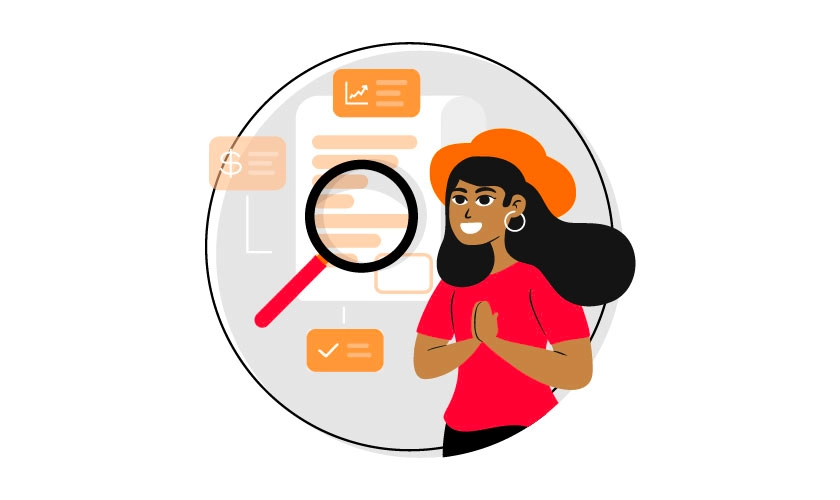Julia Salume discovered a tale of two creators while heading the global influencer channel for IG Group, a tech company catering to traders and investors. Her team allocated funds to a creator with a large following that generated significant reach. They also supported a smaller creator with high conversion rates.
She realized that audience size matters differently than commonly thought. Nano- and micro-influencers cultivate strong personal bonds with followers, engage more, and have close ties with brand partners, making them ideal for closing deals.
This year, 76 percent of brands are looking to expand their creator programs, and 86 percent of creators want to work with more brands—now is the perfect time to expand. If you’re ready to work with micro-influencers, here are a few reasons why you should consider it:
Why brands are shifting to nano- and micro-influencers [and why you should too]
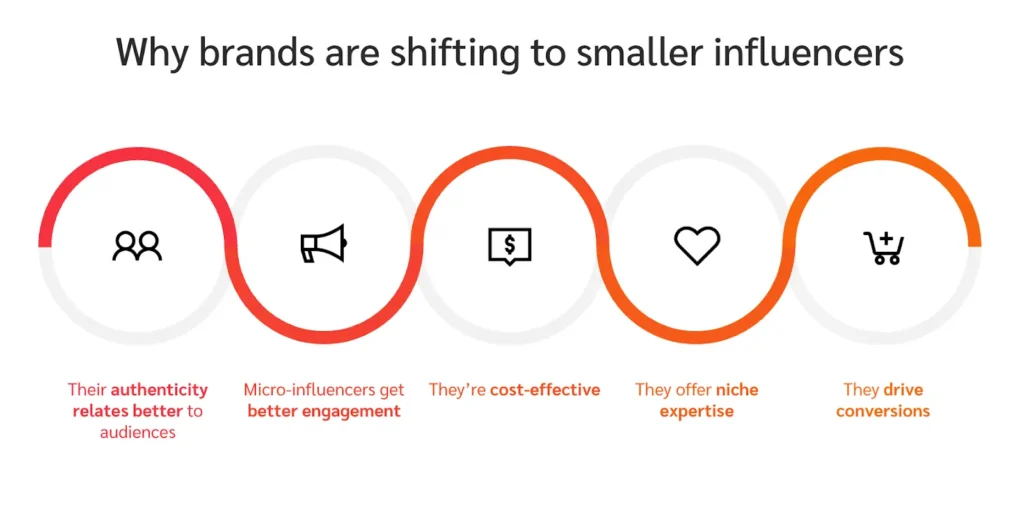
Nano-influencers have less than 15k followers, and micro-influencers have between 15k-75k followers. Smaller influencers capture a highly engaged audience with their relatability and authenticity. Micro-influencers are the most popular tier among all creator levels, connecting with nearly half of the audiences surveyed in the WARC report.
Like nano-influencers, micro-influencers can provide the most efficiency for smaller businesses on a per-post basis—but more on that later. Unsurprisingly, almost 70 percent of brands plan to use primarily nano- or micro-influencers in 2024.
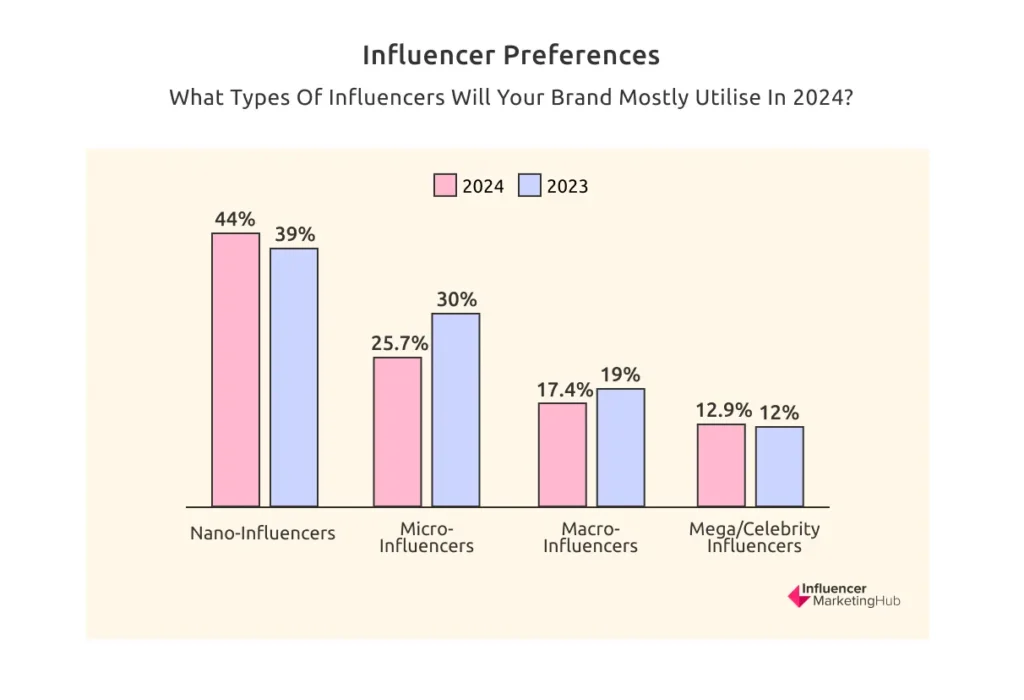
This excerpt from Influencer Marketing Hub’s The State of Influencer Marketing 2024: Benchmark Report shows a strong preference for working with nano- and micro-influencers this year.
1. Their authenticity relates better to audiences
Consumers want authentic content, and smaller creators are more relatable and accessible to audiences. Unlike larger influencers, who may have a more polished and curated image, smaller influencers often showcase their real lives and experiences. Followers may find it easier to trust their recommendations.
Since they have a more tight-knit following, it increases the chances of a successful brand partnership as they can leverage this trust.
Unsurprisingly, marketers saw the most success with micro-influencers (47 percent) in 2023.

This excerpt from The state of influencer marketing for consumers in 2023 shows the different influencer types by size.
Authenticity in action: Micro-influencer Corey Hackett-Greene (48k TikTok followers) shares family and lifestyle content with his followers. His partnership with The Logan Hotel in Philadelphia shows Corey staying at the hotel with his wife—gaining nearly 14k views. This post works because it aligns with Corey’s authentic, family values, and who doesn’t like a fancy hotel?

2. Micro-influencers get better engagement
While larger influencers may have a higher reach, micro- and nano-influencers have significantly higher engagement rates. Small-scale influencers with thousands of fans drive 60 percent higher campaign engagement rates than those on the macro end of the scale.
Micro-influencers have a smaller and more dedicated following who are genuinely interested in their content. Their audiences usually engage more frequently and take the next steps, such as clicking through links.
Engagement in action: Digital creator Trina Albus (36k Instagram followers) talks about all things beauty beyond 40, sharing her favorite products and treatments. Her Instagram Reel promoting Omnilux’s LED eye brightener racked up a phenomenal 1.8m views.

3. They offer budget-friendly rates
Working with micro-influencers can be a more cost-effective strategy and lower brand risk. They have a smaller following, so their rates are often more affordable than larger influencers.
Depending on the platform, macro-influencers can charge anywhere from $15k-$49k per post. This significant investment makes it harder for brands to test an individual creator without carrying notable risks.
Nano- and micro-influencer pricing can start from as little as $200 per post, depending on the platform and campaign, making it a much lower-risk investment. Brands with smaller budgets can still tap into the benefits of influencer marketing and reach their target audience.
Most marketers (44 percent) say that the largest benefit of working with small influencers is that they’re less expensive and easier to establish long-term partnerships with.
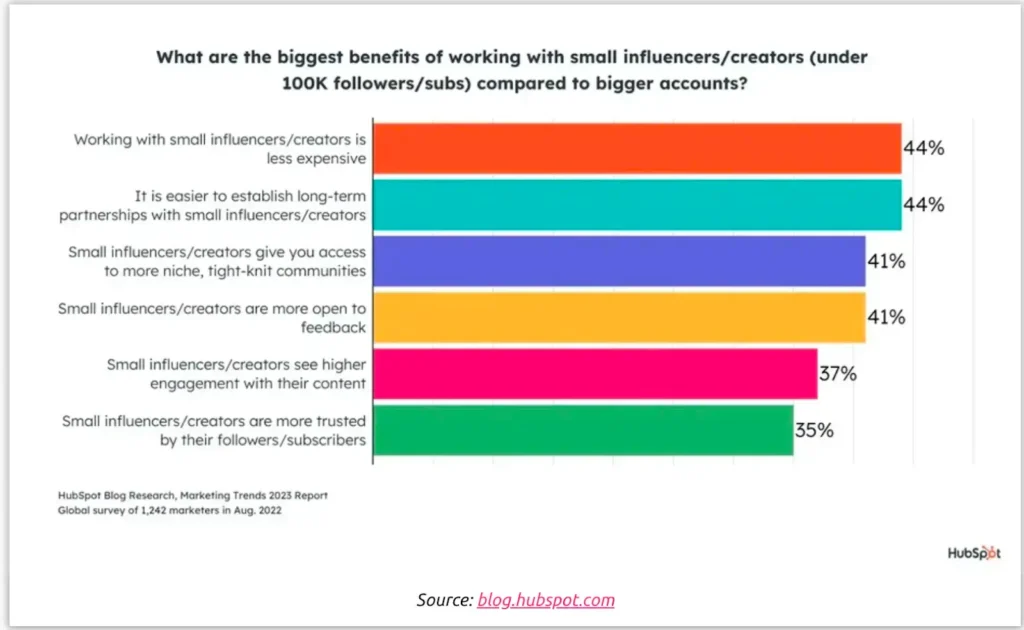
This excerpt from Hubspot’s The 2024 State of Marketing & Trends Report reveals many benefits of working with smaller influencers.
With lower costs, brands have room to test, learn, and implement best practices over time, for example, what messaging or platforms work best for your brand.
Cost-effectiveness in action: Micro-influencer and YouTuber @MagnifiedMoney offers financial advice to his 45k YouTube subscribers. In this video, he weighs the pros and cons of the payment services Cashapp vs Venmo. For a smaller fee vs larger influencers, you can get your brand out there to a highly engaged audience like @MagnifiedMoney’s.

4. They offer niche expertise for targeted audiences
Another advantage of micro-influencers is their niche expertise. They often specialize in a specific area or topic, making them a perfect fit for brands targeting a particular audience.
Niche accounts enable followers to share their unique passions with these creators and find helpful content at the same time. These accounts may also become community hubs where audience members interact with each other over their shared interests.
These niche accounts become places where entertainment meets education. Entertainment is the most liked content for consumers, which explains why niche content performs so well.
Niche content in action: Take YouTuber and nano-influencer Emily from Food Box HQ. Her niche channel helps 11k+ followers find the country’s best meal kits and food service deliveries. While the videos are fun to watch, they also provide precise details about the taste and value of meal kits. The audience can lower their purchase risk by relying on what Emily recommends (or doesn’t).

5. They drive conversions through audience relationships
Brands often find that smaller influencers are great for driving conversions. They have more time to engage directly and build stronger individual relationships with their followers.
Beyond engagement, you can also work with smaller influencers on a performance model. For example, you could gift them products and offer an affiliate link to drive conversions.
Driving conversions in action: Micro-influencer @jessicabakes_x (22k Instagram followers) shares recipes and cookware videos on Instagram, like this Reel of a gifted cookware set from the brand Our Place.

The 5 dos and don’ts of influencer recruitment
Reaching out to potential influencer partners should follow best practices to ensure better success. Follow these do’s and don’ts when recruiting influencers:
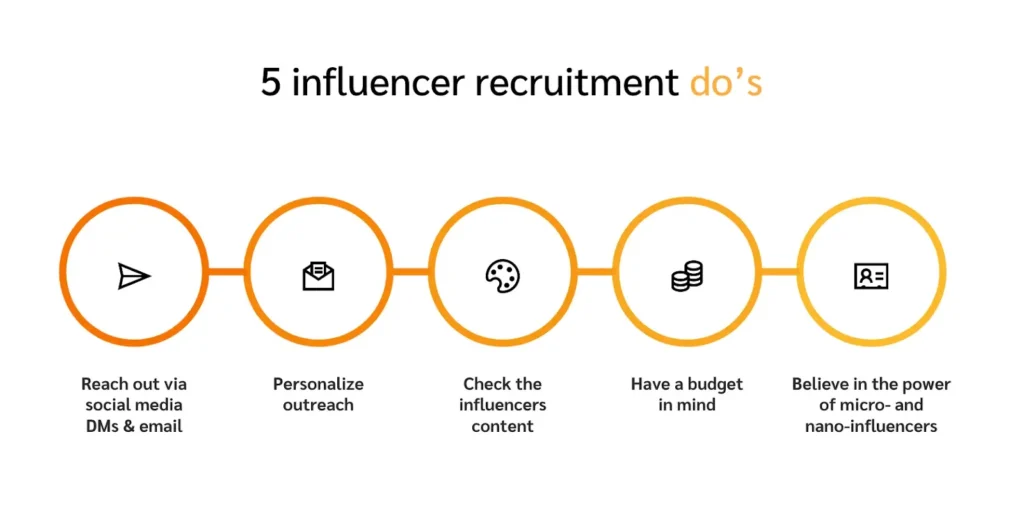
- Do: reach out via social media DMs and emails
- Do: personalize outreach
- Do: check the influencer’s content
- Do: have a budget in mind
- Do: believe in the power of micro- and nano-influencers
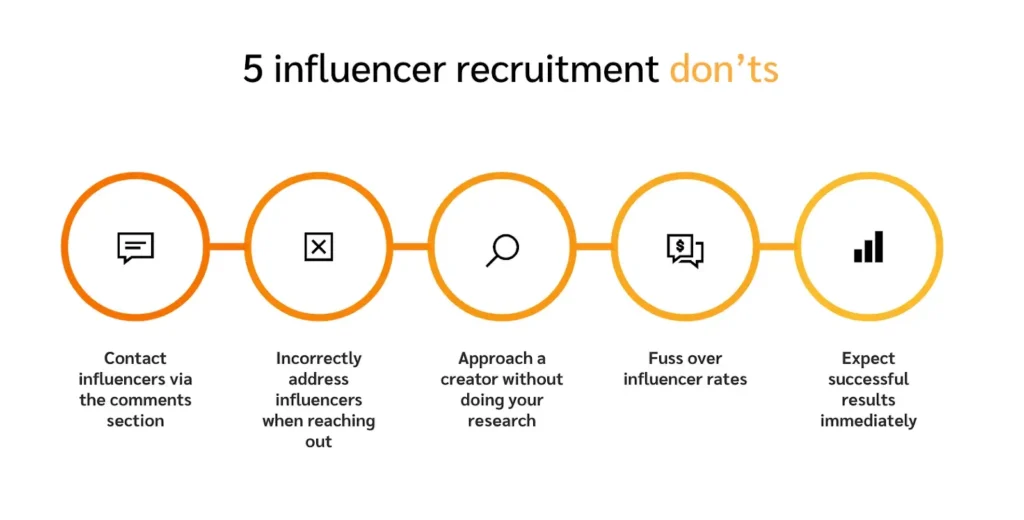
- Don’t: contact influencers via the comment section
- Don’t: incorrectly address creators when reaching out
- Don’t: approach a content creator without doing your research
- Don’t: fuss over influencer rates
- Don’t: expect successful results immediately
Read more: The marketer’s guide to influencer outreach in 2024 [+5 dos and don’ts]
FAQs
These smaller influencers are an excellent option for brands, particularly those new to influencer marketing. Here are five advantages of collaborating with them:
- High audience engagement
- Authentic content creation
- Budget-friendly rates
- Niche expertise
- Ability to drive conversions
Nano- and micro-influencers tend to have higher engagement rates because they often maintain closer, more personal connections with their followers. This smaller audience size allows for more meaningful interactions, fostering a sense of community and trust. As a result, their followers are more likely to engage with their content, leading to higher overall engagement rates.
Find influencers on social media that align with your brand values and have an engaged audience. Then reach out to them and discuss your strategy and goals. Next, align on the deliverables and compensation. impact.com / creator offers a creator marketplace that lets you filter creators according to size, compensation type, and more.
It’s a no-brainer: Nano- and micro-influencers carry low risks and high returns on investment
Partnering with nano- and micro-influencers is smart for brands that want to capitalize on influencer marketing. These creators offer a low-risk investment while delivering significant value through their highly engaged audiences and authentic content.
With platforms like impact.com’s creator marketplace, brands can easily find, recruit, and collaborate with influencers of all sizes, from small to large. This full-funnel marketing platform automates the process, allowing brands to track, pay, and optimize their influencer campaigns throughout the customer journey.



